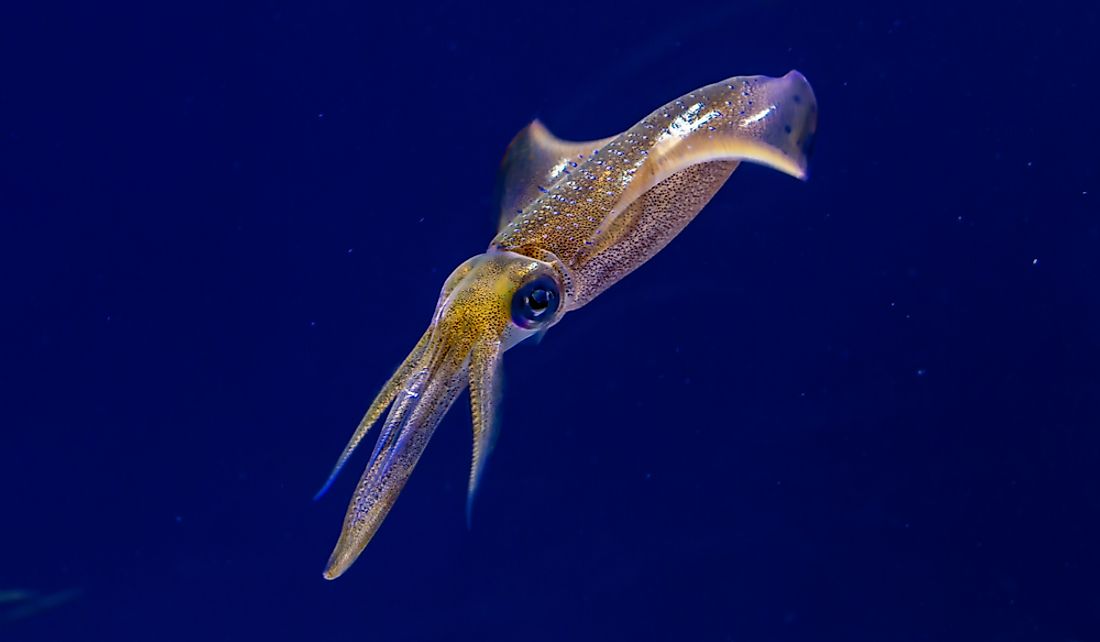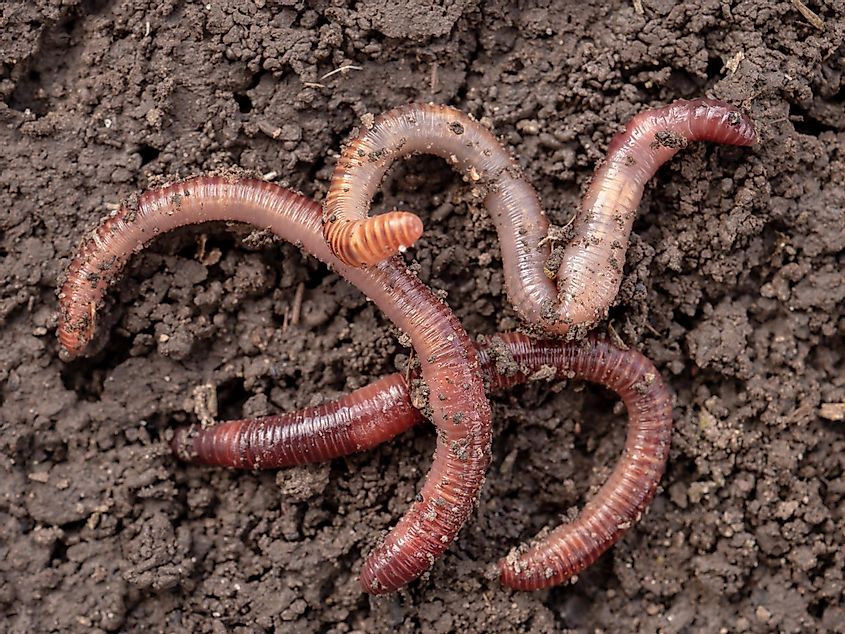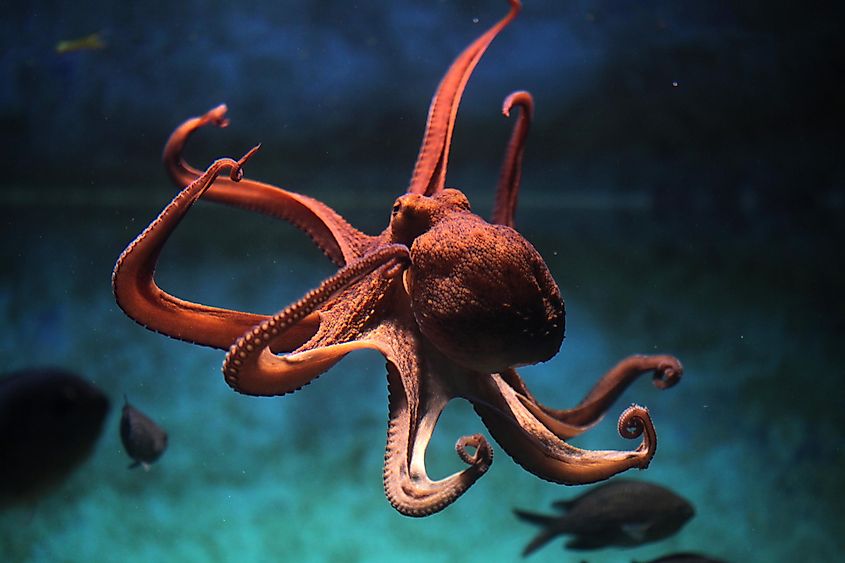Animals With More Than One Heart

- Octopuses and squid have three hearts.
- Earthworms have five hearts.
- Scientists are studying cockroach and hagfish hearts to help design solutions for human heart disease.
Human bodies rely on the steady beat of a single heart to move oxygen and nutrients through the body via blood in the circulatory system. While this is also the case for most animals, there are a few that survive without a heart (some members of the echinoderm class, including starfish) and others that require more than one to keep their systems flowing, usually with a primary organ supplemented by smaller hearts to pump blood through the body. These are a few well-known animals that have more than one heart beating to live.
Earthworms
While they are not complete organs, the earthworm does have five pseudo-hearts, which are actually pairs of aortic arches that function similarly to a heart. These five arches, which each have only one chamber, are located near the earthworm's mouth. Earthworms breathe through their skin, relying on moisture to make their respiratory system function, and once oxygen has entered the body one of the five aortic arch pairs acts as the primary organ, pumping blood to the rest of the arches and oxygenated blood to the entire body using its nerve cells to regulate the heartbeat.

Cockroach
For years, people believed the cockroach had 13 hearts, but these insects actually have just one heart divided into 13 chambers, making it more resilient to failure than the human heart, which has just four chambers. Their multi-chambered hearts are tube-shaped and organized sequentially: one chamber pumps blood into the next, and so on, until the output pressure in the last chamber is ideal. Though the cockroach heart will not stop beating if one chamber malfunctions, it will work less efficiently. Biological scientists in India have taken the notion of a multi-chambered heart and created an artificial organ shaped like an onion with a series of spheres rather than a tube, with the hope it will be less prone to error than artificial heart models currently used.
Octopus and Squid
There are three hearts beating inside octopuses and squid: one main heart that pumps oxygenated blood through the entire body and two branchial hearts that specifically pump blood through the gills to the main heart for oxygenation. The main reason for these functions is the composition of the cephalopod's blood: rather than being comprised of iron-rich hemoglobin, it is made up of copper-rich hemocyanin, which dissolves directly into the animals' blood, making it blue. Hemoglobin is usually more efficient at transporting oxygen than hemocyanin, except in colder, low-oxygen places like the bottom of the ocean, making the branchial hearts are necessary to assist the main heart in supplying the necessary oxygen to the body.

Hagfish
Considered a primitive animal, the hagfish looks like an eel but is considered a fish. It is equipped with four hearts and between five and 15 pairs of gills that help oxygenate its blood. One of its four hearts, a branchial heart, pumps blood to the entire body while the other three are considered accessory pumps. They thrive on the bottom of the ocean floor, where oxygen is scarce, scavenging for fish or even dead carcasses to feed on. Due to the lack of oxygen in their preferred environment, hagfish hearts have evolved to continue beating without oxygen for 36 hours, as opposed to other species, like humans, that will have permanent damage within minutes of oxygen deprivation.







